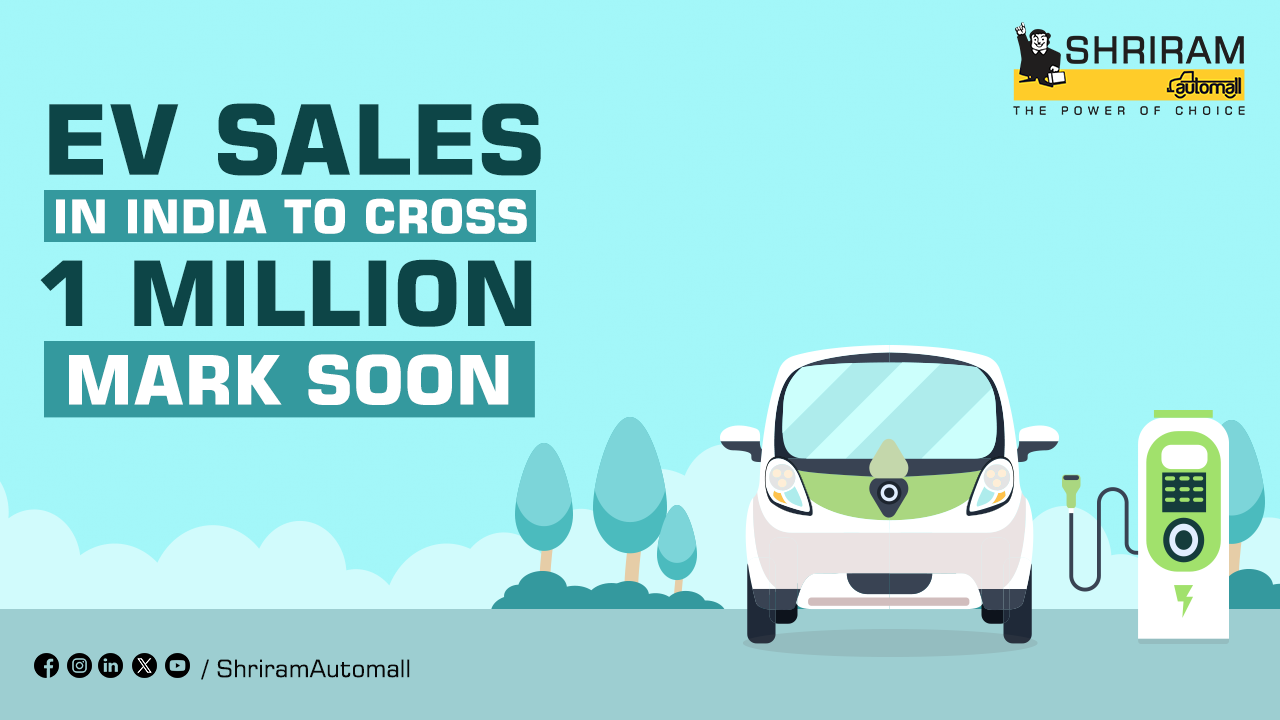EV sales in India to cross 1 Million mark soon
India's Electric Vehicle Industry Accelerates Towards a Million Units: A Look at the Ongoing Surge

The Indian electric vehicle (EV) industry is poised to achieve a remarkable milestone for the second consecutive year, with sales set to surpass a million units. According to the latest retail sales data available as of September 4, sourced from the government's Vahan website, the industry is only 58,913 units away from surpassing the record-breaking sales figures of the entire calendar year 2022, which saw 10,24,781 EVs sold. The period from January to August 2023 witnessed a substantial year-on-year growth of 65%, with total EV retail sales reaching 965,868 units, compared to 585,781 units during the same months in 2022.
The year 2022 marked a significant turning point for EV sales in India, as it became the first year to cross the one-million-unit mark. The average monthly sales from January to August 2023, approximately 120,733 units or 4,024 EVs sold daily across the country, indicate that the record set in CY2022 will likely be surpassed in the first half of September 2023, reflecting the surging demand for EVs. Notably, this growth trend has continued despite the onset of the festive season in India, suggesting that the coming months could witness even higher numbers.
August 2023's retail sales of 126,466 units marked the twelfth consecutive month in which EV sales exceeded 100,000 units. This milestone was initially achieved in October 2022, followed by sustained momentum in November (121,602 units) and December (105,003 units). This trend continued through all eight months of CY2023, reaching its peak in May 2023, with 158,369 units sold. The data table below provides a comprehensive overview of the growth in sales throughout the year.
The consistent surpassing of the 100,000-unit monthly mark underscores the maturing Indian EV market, particularly in the electric two-wheeler segment, which managed to absorb a substantial 25% reduction in the FAME II subsidy for e-two-wheelers that took effect on June 1. Although monthly EV sales experienced a temporary dip in June, with 102,429 units sold, a recovery has been evident, as seen in the improved figures for July (116,295 units) and August (126,466 units).
Two segments, electric two-wheelers and three-wheelers, account for the majority of EV market share. Electric two-wheelers, with 552,439 units sold, constitute 57.19% of total EV sales, while three-wheelers, with 356,837 units sold, claim a 37% share of the Indian EV market. Electric cars and SUVs, totalling 53,206 units, have a 5.50% share, with commercial vehicles, including goods carriers and buses (3,065 units), contributing to a 0.31% share (see EV retail sales data table below).
India's EV Industry Gears Up for Growth
India has set ambitious targets for electric vehicles (EVs), aiming for them to constitute 30% of the country's mobility requirements by 2030. This drive is fuelled by various factors, including the FAME scheme, state subsidies, and an expanding range of EVs across vehicle segments. The Ministry of Heavy Industries introduced the five-year Faster Adoption and Manufacturing of Electric Vehicles in India Phase II (FAME India Phase II) Scheme, with a budgetary allocation of Rs 10,000 crore, which is scheduled to conclude on March 31, 2024. FAME II primarily focuses on supporting the electrification of public and shared transportation, offering demand incentives for 7,090 electric buses, 500,000 e-three-wheelers, 55,000 passenger vehicles, and 10 lakh e-two-wheelers. Additionally, the scheme supports the development of EV charging infrastructure. With the likelihood of the FAME subsidy scheme not being extended, original equipment manufacturers (OEMs) and EV buyers may face new market dynamics. OEMs and their component and technology supplier ecosystem are actively working to reduce development and product costs, enhancing the affordability of EVs compared to internal combustion engine-powered two-wheelers.
The domestic EV industry's sales growth in 2023 can be attributed to several factors, including the increased availability of EV products in the market, rising fuel prices (petrol, diesel, and CNG), state subsidies, and incentives provided under FAME II. Growing consumer awareness regarding the importance of eco-friendly transportation and the cost-effectiveness of EV ownership over the long term have also played significant roles.
As growth continues, the EV industry is poised for further progress in the second half of the year. Challenges such as inadequate charging infrastructure and the initial high cost of EVs, primarily associated with battery expenses, persist. However, OEMs are intensifying their efforts towards localization to reduce costs and improve affordability. Moreover, a gradual reduction in battery prices is expected, instilling cautious optimism for this eco-friendly form of mobility.
Given that India's EV industry is on track to surpass a million units within just nine months in 2023, the period from October to December 2023 could add another 375,000 units, especially with the onset of the festive season. This would translate to an estimated 1.3 million units and a 25% year-on-year growth compared to CY2022's 10,24,808 EVs. In CY2022, EVs constituted 5% of the total sales in India's automotive industry, which recorded 2,07,52,305 units sold. The question now is whether CY2023 will raise the bar even higher for the Indian EV market. Stay tuned for further updates on this exciting journey.
Stay Tuned with SAMIL for more industry News

 Download Our App
Download Our App



